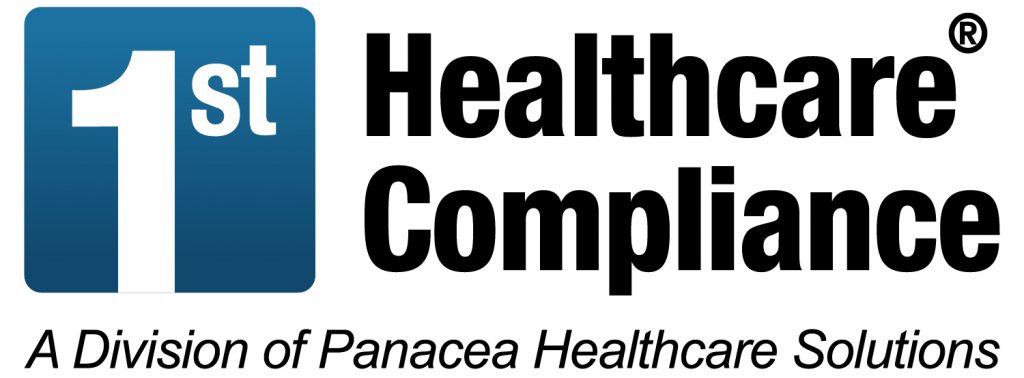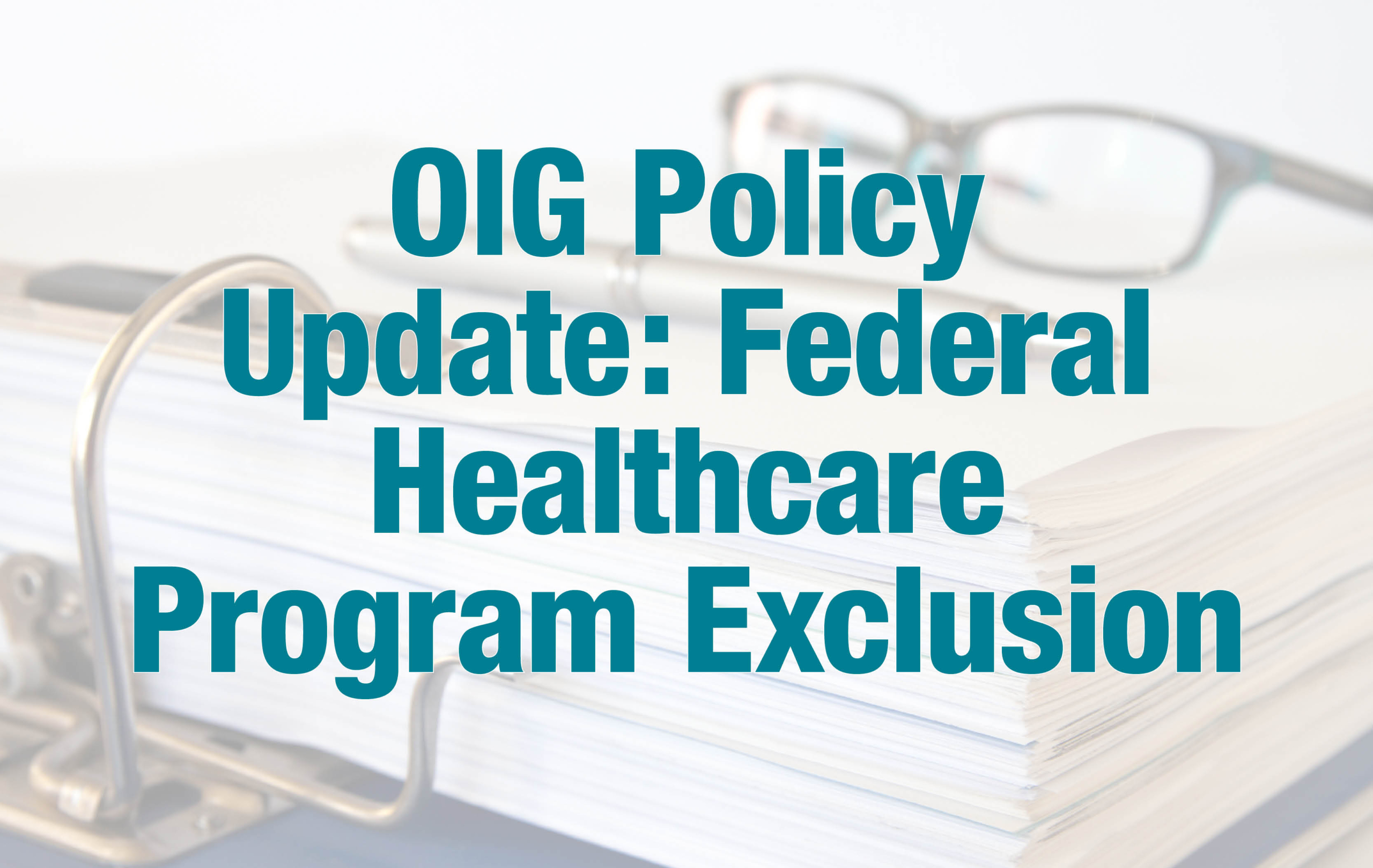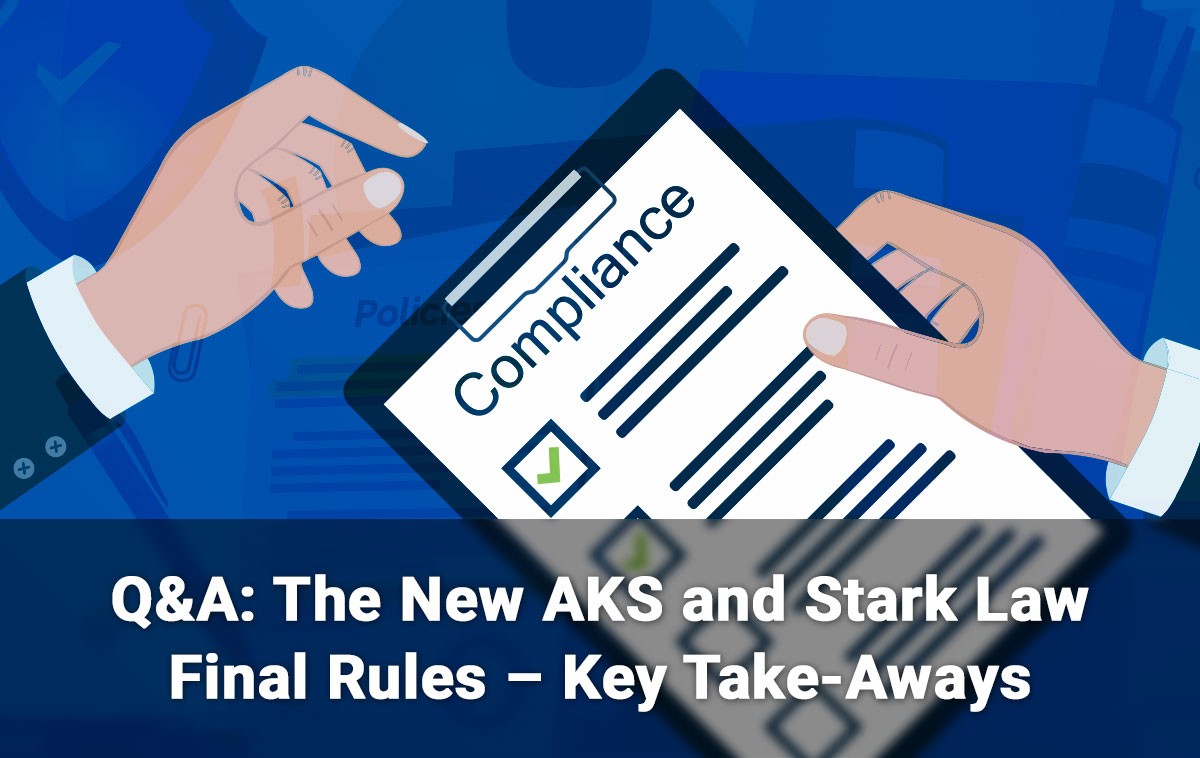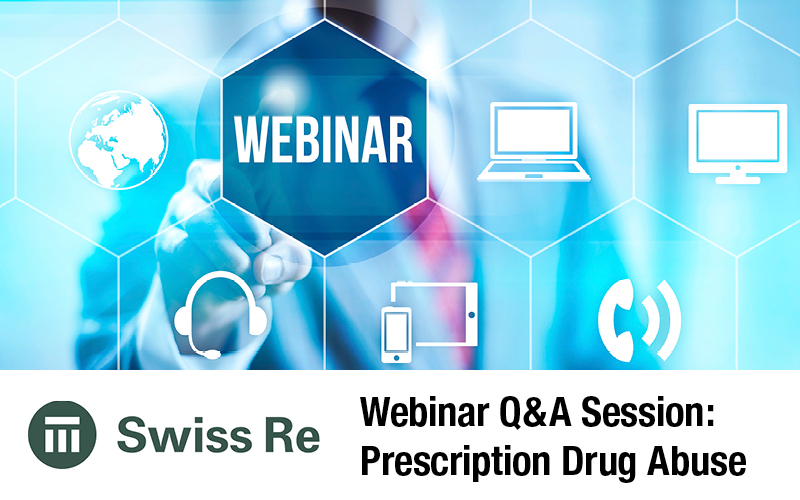OIG Policy Update: Excluding Participation in Federal Healthcare Programs
On April 16, 2016, the Office of Inspector General of the Department of Health and Human Services (OIG) issued a revised policy statement updating its criteria on excluding individuals/entities from participation in Medicare, Medicaid, and all other Federal healthcare programs. This policy statement is an update to the 1997 statement and provides insight into the OIG’s exclusion process, which determines if and when an individual or entity ends up on the OIG’s List of Excluded Individuals and Entities (LEIE).
The OIG has the authority to exclude individuals and entities from participation in Federal healthcare programs by way of mandatory or permissive exclusions. The revised policy statement applies to the evaluation process for permissive exclusions. The OIG presumes that some period of exclusion is necessary, but this presumption is rebuttable in certain situations.
- Mandatory Exclusions— The OIG is required to exclude an individual/entity for a minimum of 5 years if convicted of program-related crimes, patient abuse, felony health care fraud, or a felony relating to controlled substances. 42 U.S.C. § 1320a-7(a).
- Permissive Exclusions— The OIG has discretion to exclude an individual/entity under 16 different authorities, such as (i) engaging in fraud or kickbacks, (ii) misdemeanor conviction relating to healthcare financial misconduct (fraud, theft, embezzlement etc.) or controlled substance, (iii) conviction for obstruction of an investigation or audit, (iv) healthcare license revocation or suspension, (v) exclusion/suspension under federal or state healthcare programs, (vi) filing claims for excessive charges or unnecessary services and failure to furnish medically necessary services, (vii) defaulting on health education loans or scholarship obligations. 42 U.S.C. § 1320a-7(b).
The Compliance Risk Spectrum
The OIG evaluates the healthcare fraud committed and the potential for future risk of fraud to Federal healthcare programs by using a risk spectrum. The amount of risk directly correlates with the the OIG’s action and whether the presumption of exclusion is rebutted. The risk spectrum dictates the OIG’s approach, which includes (i) exclusion, (ii) heightened security (unilateral monitoring), (iii) integrity obligations (enforcing a corporate integrity agreement), (iv) taking no further action but reserving its exclusion authority, or (v) issuing a release of exclusion based on good faith and cooperative self-disclosure of the fraudulent conduct. If the potential for future risk is high, the OIG will pursue exclusion. On the other hand, if the risk to Federal healthcare programs is low enough the OIG will provide a release from exclusion. When the risk falls in the middle of the spectrum, the OIG must determine which administrative remedy is appropriate.
Risk Factors Considered
The OIG weighs the following factors in determining where an individual or entity falls on the risk spectrum:
- Nature and Circumstances of Conduct– factors include (i) the adverse impact of the conduct, such as physical, mental, financial, or other impact to beneficiaries, recipients, and patients, (ii) the amount of financial loss to Federal health care programs, (iii) whether the conduct is part of a pattern of wrongdoing, repeated or continual, (iv) if the individual or entity took a leadership role in perpetrating the unlawful conduct, and (v) if there is a history of fraudulent conduct.
- Conduct During The Government Investigation– factors include (i) whether the individual/entity impeded or attempted to impede the investigation or audit, (ii) if the unlawful conduct was concealed, (iii) failure to comply with a subpoena, (iv) if the individual initiated an internal investigation prior to the government’s investigation, (v) if the individual self-disclosed the unlawful conduct or cooperated in the government investigation, and (vi) whether resolution included adverse licensure action, criminal resolution, or inability to pay the appropriate monetary amount to resolve a fraud case.
- Significant Ameliorative Efforts– factors include (i) whether appropriate disciplinary action was taken, (ii) whether the entity devoted more resources to its compliance function, (iii) whether the individual obtained relevant additional training to improve his/her ability to practice as a provider of healthcare items/services.
- History of Compliance– factors include (i) history of self-disclosures made in good faith, (ii) absence of a compliance program.
Having an Effective Compliance Program
This policy statement reflects the government’s continued and unyielding focus on preventing healthcare fraud and abuse. Providers that have an effective compliance program will be able to avoid unlawful conduct through proper training, resolve problems head on as they occur, and take appropriate corrective action to avoid the entity and its employees joining the OIG’s LEIE.





